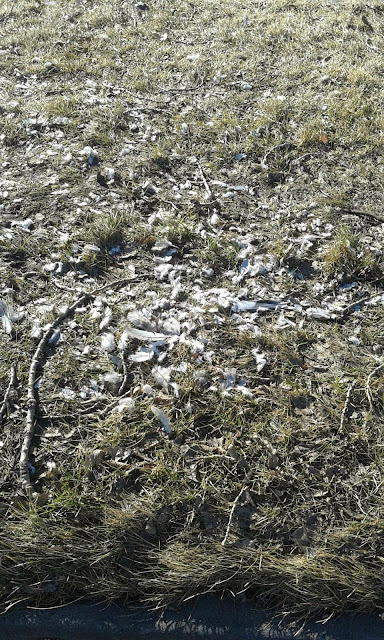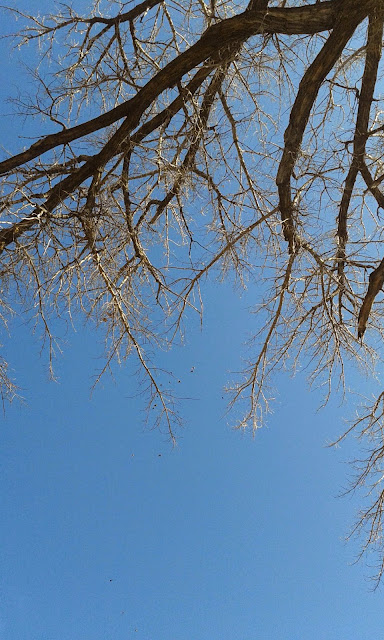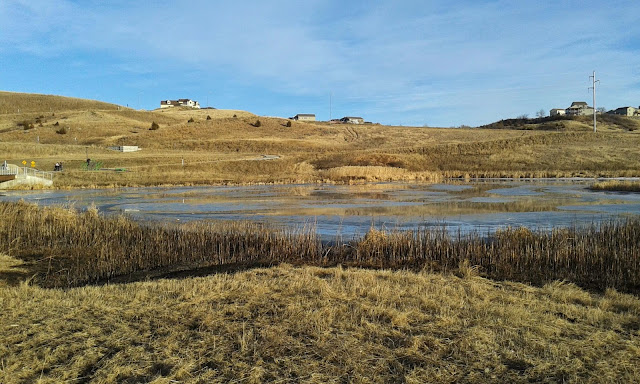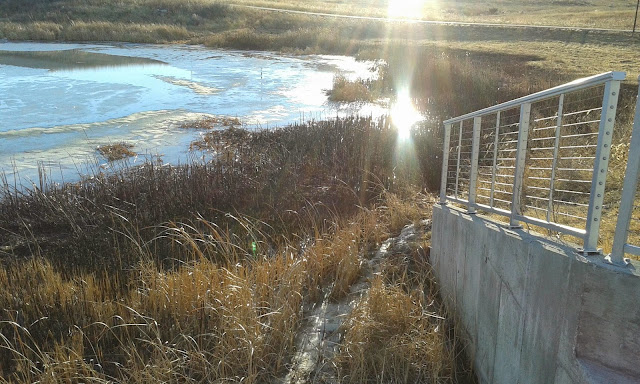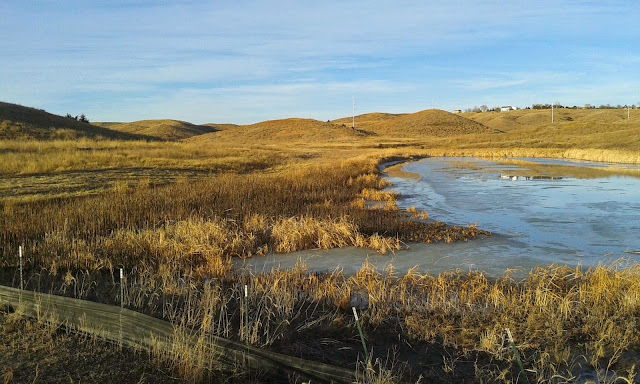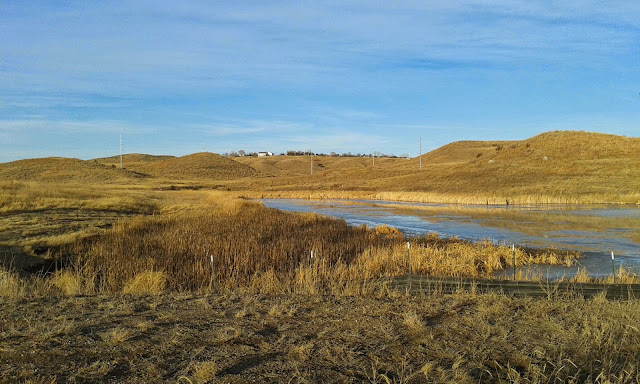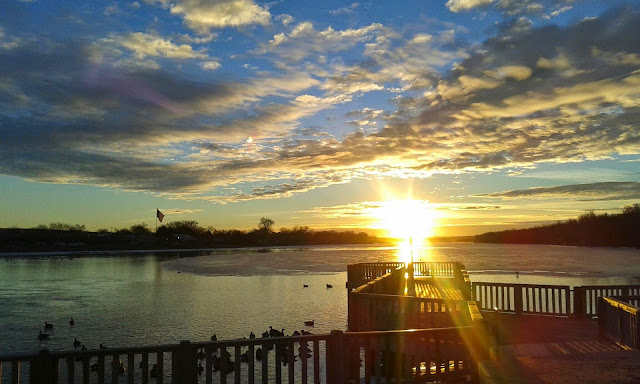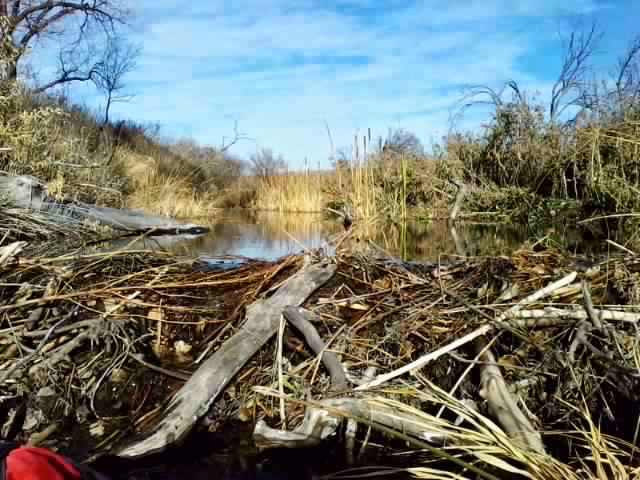Date: Wed. Jan 15, 2015
Time: 5:48PM CST
Location: Parking Lot, SD Discovery Center, Pierre
Temperature:~ 30°
Wind:5mph
Skies: Broken altocumulus
After several weeks of cold weather where the temperature did not get above the mid 20's, we are finally having a little bit of a January Thaw. I stepped outside of work and snapped this picture mainly because I was struck by how much melt had occurred in the parking lot.
 |
| Figure 1: Parking lot. A result of January thaw? |
This got me thinking about the January Thaw. January Thaw was defined in the 1954 Glossary of Meteorology by the American Meteorologic Society as
"A period of mild weather, popularly supposed to recur each year in late January in New England and other parts of the northeastern United States....Statistical tests show a high probability that it is a real singularity." (1)
Elsewhere on the Internet, it is defined as a rise of 10°F over previous weeks' weather (2) or normal highs (1) . There is some discussion over whether the January Thaw is a legitimate weather singularity, i.e a "characteristic meteorological condition that tends to occur on or near a specific calendar date more frequently than chance would indicate".
I wanted to see for myself what the data in my community said about a January thaw. So I found daily maximum temperatures at the
Carbon Dioxide Information Analysis Center and looked at the daily average (blue line) and median temperatures (red line) in Jan from 1934 to 2013 and compared them to the normal January highs (green line).
 |
| Figure 2: Average, Median, and Normal January Temps in Pierre by date |
The first thing I noticed was that there was not a 10°F spread in either average or median temperatures. The highest average temperature was 30°, the lowest was a smidge below 26°. The median temperatures had a similar spread of 32° and 26° respectively.
There did seem to be some rises above normal on the 10th and 21st of January. But...
All data has variation so it is hard to tell if the rises in the graph above mean anything. The median temperature does go above normal during January but did it happen on a specific date or dates frequently enough to qualify as a singularity?
So my question became "Is it 10°F greater than an averaged normal of 30°F on a certain date more than 50% of the time?" To find that out, I looked at the number of times that 40° or warmer occurred and on which dates it happened.
 |
| Figure 3: Number of times temperatures reached 40° in January by date. |
Each of the dates in the data set occurred 79 times between 1934 and 2013. For example, Jan 1 occurred in 1934, 1935, 1936 and so on. For a singularity, the temperature range of 40°F or higher would have to occur 40 times or more on a date.
When you look at our data, there were not any dates that had temperatures of 40°F or higher more than 40 times.
Ok, maybe I am being too strict with wanting a temperature of 40°F, which you recall is 10°F higher than the averaged normal temperature. Maybe I should dial back my expectations a bit.
So I looked at how many times temperatures above 33°F occurred and on which dates as 33°F is, technically, a thaw and can feel pretty darn good after really cold temperatures.
 |
| Figure 4: Number of times temperature reached 33° or above in January by date. |
Still the same result. No date had temperatures of 33°F or higher at least 40 times.
Does this mean that the January Thaw is not real?
As far as Pierre SD is concerned, the analysis of this data would indicate the January thaw is not a singularity, a meteorologic event associated with a specific date.
What we do know is that temperatures in January rise above 33°F often enough that our "rule of thumb maker" recognizes a thaw happens frequently, even if it doesn't always happen on or near the same date.
 |
| Figure 5: Number of January days above 33° by year. |
This chart shows us that temperatures at or above 33°F have happened almost every year. The only year that did NOT have a "warm" day was in 1940. 1937 and 1978 were pretty cold as well, with only one day at 33°F or above.
When you look at the data it is also interesting to note that the number of days at or above 33°F seem to be increasing.
But that is a question for another day.
(1) The Weather Doctor. Weather Almanac for January 2002. January Thaw: Winter Cold Relief. http://www.islandnet.com/~see/weather/almanac/arc2002/alm02jan2.htm. Last accessed Jan 15, 2015.
(2) What is January Thaw - Farmer's Almanac. http://farmersalmanac.com/weather/2010/01/25/what-is-a-january-thaw/ Last accessed Jan 15, 2015.
